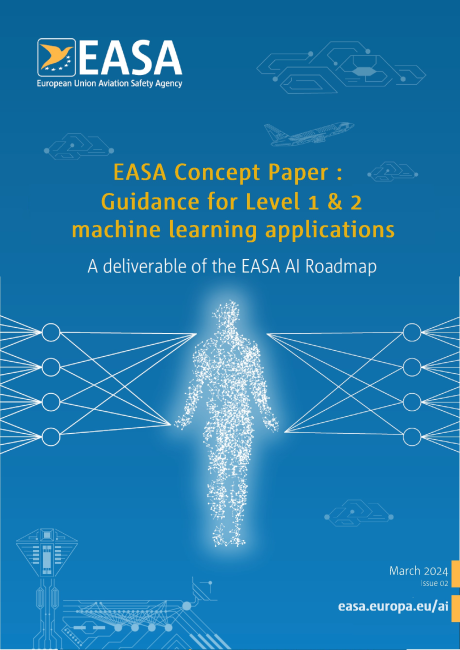
In a significant next step on its Artificial Intelligence (AI) Roadmap, the European Union Aviation Safety Agency (EASA) has published Issue 2 of its Concept Paper on Artificial Intelligence (AI) and Machine Learning (ML). This second issue offers the potential to enhance four aviation pillars – safety, efficiency, sustainability, and passenger experience – and positions ML at the forefront of aviation innovation. At the same time, the path to ML deployment is bringing unique challenges, particularly in safeguarding operational safety.
This issue of the EASA AI Concept Paper refines the guidance for Level 1 AI applications (those enhancing human capabilities) and deepens the exploration of 'learning assurance', 'AI explainability' and 'ethics-based assessment'. These foundation concepts are crucial for the safe and trustworthy development and implementation of AI technologies in aviation.
Going one step further, this new issue provides comprehensive guidance for the development and deployment of Level 2 AI-based systems. Level 2 AI introduces the groundbreaking concept of 'human-AI teaming' (HAT), setting the stage for AI systems that automatically take decisions under human oversight. This advancement in the authority level of AI-based systems shows the need for human guidance and design principles to ensure safe 'human-AI interaction' (HAII).
Issue 2 of the EASA AI Concept Paper marks the entry of the EASA AI Roadmap into its second phase (framework consolidation), where Rulemaking Task (RMT).0742 will facilitate the integration of the anticipated guidance from the AI Concept Paper into a comprehensive framework of generic rules and acceptable means of compliance (AMC). These rules and AMC are precisely tailored to accommodate the unique requirements of each aviation domain impacted by these new technologies.
Overall, this new AI Roadmap deliverable underscores EASA's commitment towards a future where AI and ML are integrated in aviation's successes. This vision is not just about technological advancement, but mainly about building trust in AI applications, ensuring they complement human expertise and enhance overall aviation safety and sustainability.
EASA would like to thank all the stakeholders who participated in the public consultation phase and, in so doing, contributed to the maturity of this new publication.


